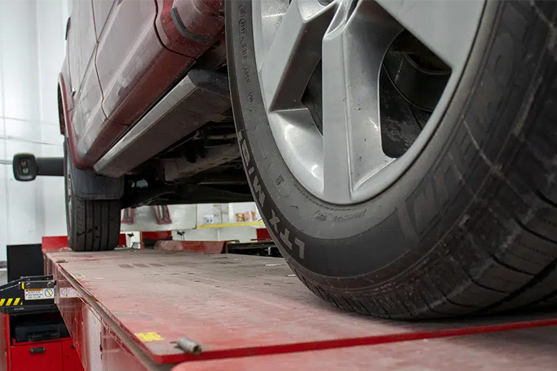Your tires run a lot. When it serves most, they grab the surface, deal with road bumps, and keep your car moving. However, frequently, they seem to give up much ahead of their time. That sudden realization—when the tread looks too shallow or one side is more worn than the other—can be frustrating.
Tires aren’t cheap. And when they wear out too soon, it hits harder not only on your wallet but also on your sense of safety. That persistent idea follows you every time you drive; something isn’t quite right.
The good news is typically that early tire wear has a cause. Once you identify the source, you can make little changes that will have a great effect. Let’s go over the most typical reasons your tire’s lifespan could be shortened without you even noticing it.
- Improper Tire Pressure
Tires need the right amount of air to wear evenly. Too much or too little pressure causes trouble in different ways.
- Overinflated tires wear more in the center. This happens because the extra pressure pushes the middle of the tire further into contact with the road.
- Underinflated tires wear more along the edges. That’s because the tire sags and the outer parts do more of the work.
This might not seem like a big deal at first. But uneven wear builds up quietly. And once it starts, it’s hard to reverse. You’ll find yourself replacing your tires sooner than you should.
Checking tire pressure once a month makes a world of difference. It takes just a few minutes and can save you hundreds over time.
- Misaligned Wheels
Wheel alignment might sound technical, but it simply means your wheels are pointed in the right direction. When they’re off—even just a little—your tires feel it.
Misalignment often happens after hitting potholes, curbs, or speed bumps too hard. It can also develop slowly over time from regular driving.
The signs sneak up on you. Maybe your car drifts slightly to one side. Or the steering wheel feels off-center. You adjust without thinking—but your tires are paying the price.
One edge of the tire often shows uneven wear, which is a giveaway. Getting your alignment checked, especially after any impact, helps your tires last longer and your ride feel smoother.
- Unbalanced Tires
Tire balancing isn’t just for a smoother ride. It’s also key for even tire wear. Every tire and wheel combination has tiny weight differences. If those aren’t balanced out, your tires start wearing unevenly.
You might notice a vibration at certain speeds. That’s a common clue. Even if you don’t feel it, an imbalance can still be wearing down your tires in ways you can’t see—until it’s too late.
Regular balancing, especially when you get new tires or feel something off, helps spread the load evenly. That means longer life for your tires and less strain on your suspension.
- Driving Habits
The way you drive plays a bigger role in tire wear than most people realize. Fast starts, hard braking, and sharp turns all leave their mark. Over time, aggressive driving can shave thousands of miles off your tires.
Even things like taking corners too quickly or speeding over bumps can cause small damages that add up. Driving smoothly isn’t just safer—it’s easier on your tires.
Every moment behind the wheel either protects your tires or shortens your life. Being a little gentler on the road often pays off in the long run.
- Ignoring Tire Rotation
Front and rear tires wear differently. The weight of your engine, the way your car turns, and how it accelerates all affect tire wear. If you don’t rotate your tires regularly, the ones in front tend to wear out faster.
Rotating tires means switching their positions—front to back and sometimes side to side. It helps spread the wear more evenly, giving each tire a chance to rest from the heavier work.
- Front-wheel drive vehicles usually wear out front tires quickly.
- Rear-wheel drive is the opposite.
- All-wheel drive distributes wear more evenly, but rotation is still key.
A good rotation schedule keeps your tires in sync. Skipping it leads to uneven wear, shorter lifespan, and a rougher ride.
Simple Habits That Make a Big Difference
Caring for your tires doesn’t have to be complicated. A few basic routines have a great impact:
- Check tire pressure monthly
- Rotate tires every 5,000 to 8,000 miles
- Get alignment and balancing done once a year—or when something feels off
- Drive with care, especially on rough roads
Each of these steps helps your tires last longer, your car drive better, and your wallet breathe easier.
Final Predict
Too fast, worn-out tires sometimes indicate avoidable problems. Once you know what’s behind that wear, you can correct it before it starts to cause trouble. Each component counts, including pressure, alignment, balance, habits, and rotation.
Knowing the need to stay ahead of these issues, many drivers in the Euless region look to DFW Bimmer for dependable tire solutions in Euless, TX. Your tires will last longer and perform better with the correct direction and attention; there are no surprises—just consistent reliability.


